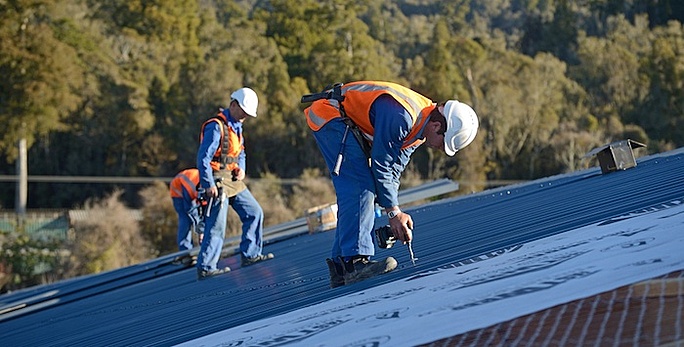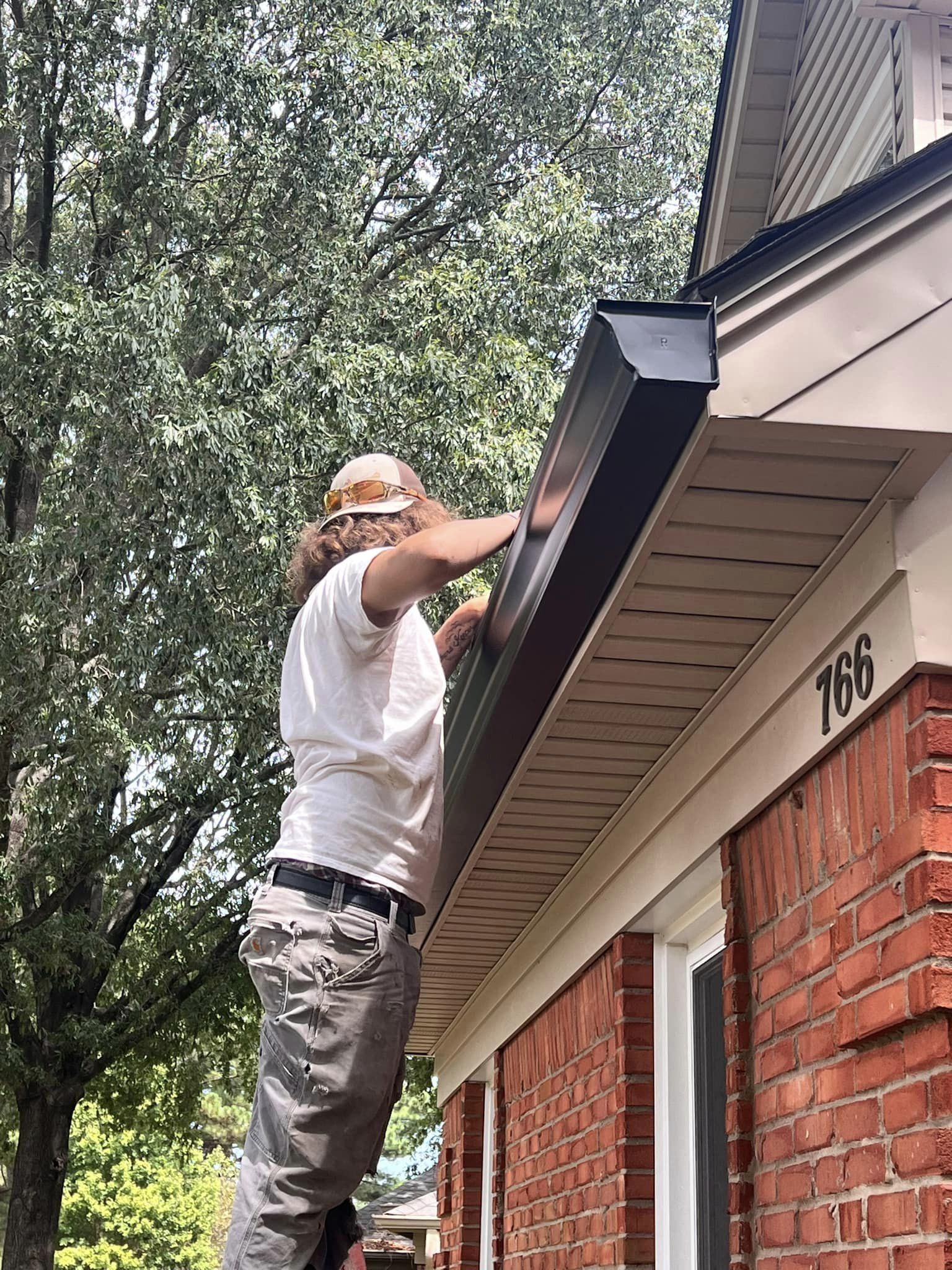Experienced Roofer: Trusted Roofing Providers You Can Count On
Experienced Roofer: Trusted Roofing Providers You Can Count On
Blog Article
Assessing the most effective Roof Covering Products for Substitute: A Detailed Analysis of Sturdiness, Cost, and Aesthetic Appeal
Picking the right roof covering material for replacement entails a cautious analysis of several vital factors, including durability, expense, and aesthetic charm. Each alternative offers special benefits and downsides; for instance, asphalt tiles are budget-friendly yet shorter-lived, while steel roofings guarantee long life at a greater financial investment. The visual influence of materials like clay floor tiles can not be overlooked, in spite of their premium rate factor. Understanding how these elements communicate can significantly affect the decision-making process. As we check out these elements additionally, the implications for your particular scenario become progressively significant.
Summary of Roofing Materials
As property owners increasingly prioritize sturdiness and power performance, understanding the numerous roof materials offered for replacement ends up being necessary. The option of roof covering products straight influences not only the aesthetic allure of a home however also its long-term efficiency and maintenance expenses.
Amongst one of the most usual roofing products are asphalt shingles, metal roofing, and ceramic tile. Asphalt tiles are preferred for their cost and ease of setup, making them a prominent option for lots of household applications. Metal roof covering, which consists of products such as steel and aluminum, uses remarkable sturdiness and energy performance, commonly reflecting warmth and reducing cooling prices. Ceramic tile roof covering, often made from clay or concrete, is treasured for its longevity and visual charm, offering a distinct appearance that can improve a home's value.
In addition, newer products such as synthetic tiles and green roof are acquiring traction. Artificial alternatives simulate conventional products while providing enhanced toughness and reduced maintenance demands. Environment-friendly roofing systems, which integrate vegetation, add to power efficiency and biodiversity.
Longevity Analysis
When assessing roof covering materials for substitute, longevity is a crucial factor that home owners need to take into consideration. The life-span and strength of roofing products straight affect long-term maintenance and replacement prices. Numerous materials exhibit varying degrees of toughness, making it important to understand their efficiency under ecological stress factors.
Asphalt shingles, while popular for their cost-effectiveness, generally last 15 to thirty years and may need even more constant replacement as a result of damage from UV direct exposure and severe climate. On the other hand, metal roof covering uses amazing resilience, with a life-span of 40 to 70 years and resistance to wind, fire, and bugs. Furthermore, clay and concrete floor tiles can withstand severe problems, frequently outliving 50 years, although their weight demands a durable structural support group.

Price Contrast
Considering the monetary ramifications of roof products is crucial for homeowners preparing a substitute. The cost of roof covering materials can differ considerably based on go to website variables such as product type, installment intricacy, and regional pricing differences.
Asphalt shingles are amongst the most economical options, usually ranging from $90 to $100 per square (100 square feet), making them a prominent choice for budget-conscious house owners. In contrast, metal roof covering can set you back in between $250 and $700 per square, relying on the kind of steel and surface selected. While metal roofs have a tendency to have a higher upfront price, their durability and power performance might result in price financial savings in time.
Clay and concrete floor tiles are also on the higher end of the range, averaging in between $300 and $600 per square. These products use durability and visual charm yet need a considerable first financial investment.
Last but not least, slate roofing, known for its phenomenal durability and ageless appearance, can range from $600 to $1,500 per square, making it the most expensive option. House owners must weigh the initial prices against the anticipated life-span and maintenance needs of each material to make an educated decision.
Visual Considerations
Aesthetic factors to consider play an important duty in choosing roofing materials, as the roof covering considerably affects a home's general look and aesthetic appeal. Property owners commonly seek materials that enhance their building style and improve the aesthetic allure of their residential or commercial property. The color, structure, and profile of roof covering materials can dramatically affect the overall visual.
Materials such as asphalt roof shingles offer a range of colors and styles, making them a prominent choice for domestic projects. In contrast, metal roof covering offers a sleek, contemporary appearance and is available in countless coatings that can suit contemporary designs. Typical options basics like clay tiles or slate can stimulate a timeless elegance, appealing to those that favor traditional aesthetic appeals.
Moreover, the assimilation of roofing products with surrounding elements, such as siding and landscape design, is crucial. A natural color scheme and harmonious structures can raise a home's outside and add to its value. House owners should additionally take into consideration just how the selected roof covering material engages with all-natural light, as this can influence the roof covering's appearance throughout the day. Eventually, picking aesthetically pleasing roofing materials requires cautious factor to consider of personal taste, building style, and the total vision for the home.
Final Referrals
Picking the appropriate roofing product can considerably boost a home's durability and visual appeal. new roof. Based on our analysis of sturdiness, expense, and visual variables, we recommend three primary choices for homeowners considering a roof replacement
Firstly, asphalt roof shingles continue to be the most preferred option because of their cost and adaptability. They offer a good balance of cost-effectiveness and defense, making them excellent for most residential applications. Home owners need to consider their durability, as they commonly last 15 to 30 years.

Lastly, for those looking for an upscale aesthetic, slate or tile roof covering offers unmatched style and resilience. These products come with a steep price tag, their life-span can surpass 100 years, making them a deserving investment for high-end homes.
Inevitably, the very best choice will certainly rely on individual spending plan, aesthetic choices, and regional environment factors to consider. Home owners need to consult with a roof covering specialist to analyze their certain demands.
Conclusion
Finally, choosing the appropriate roof material demands a careful analysis of resilience, expense, and aesthetic appeal. Asphalt roof shingles supply a cost-effective option with modest durability, while steel roof masters longevity and power performance. Clay and concrete tiles, although costlier, considerably enhance aesthetic appeal and withstand extreme weather conditions. Ultimately, the decision needs to straighten with individual budget plans, style choices, and neighborhood climate factors, highlighting the importance of expert consultation for educated options.
Report this page